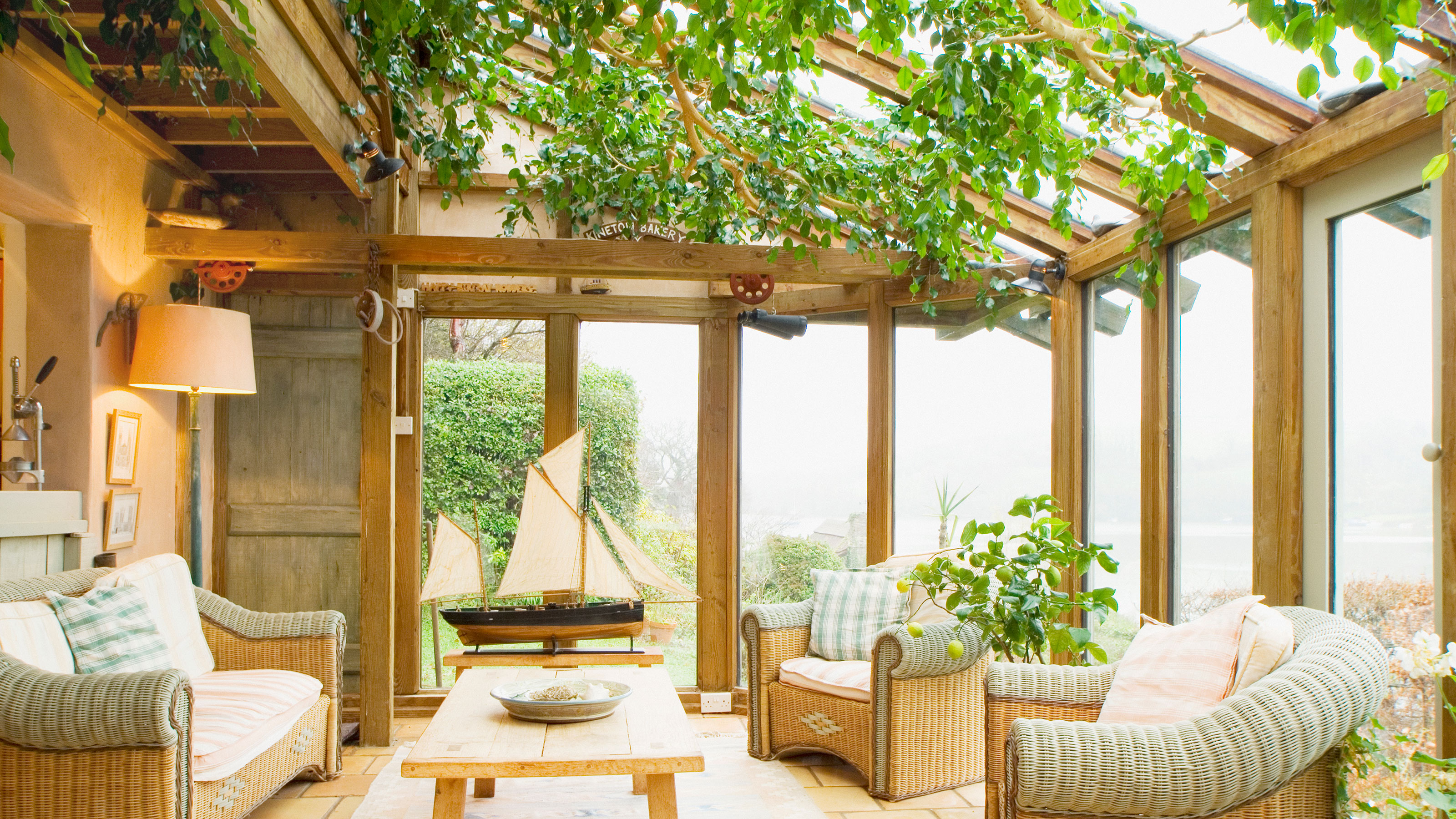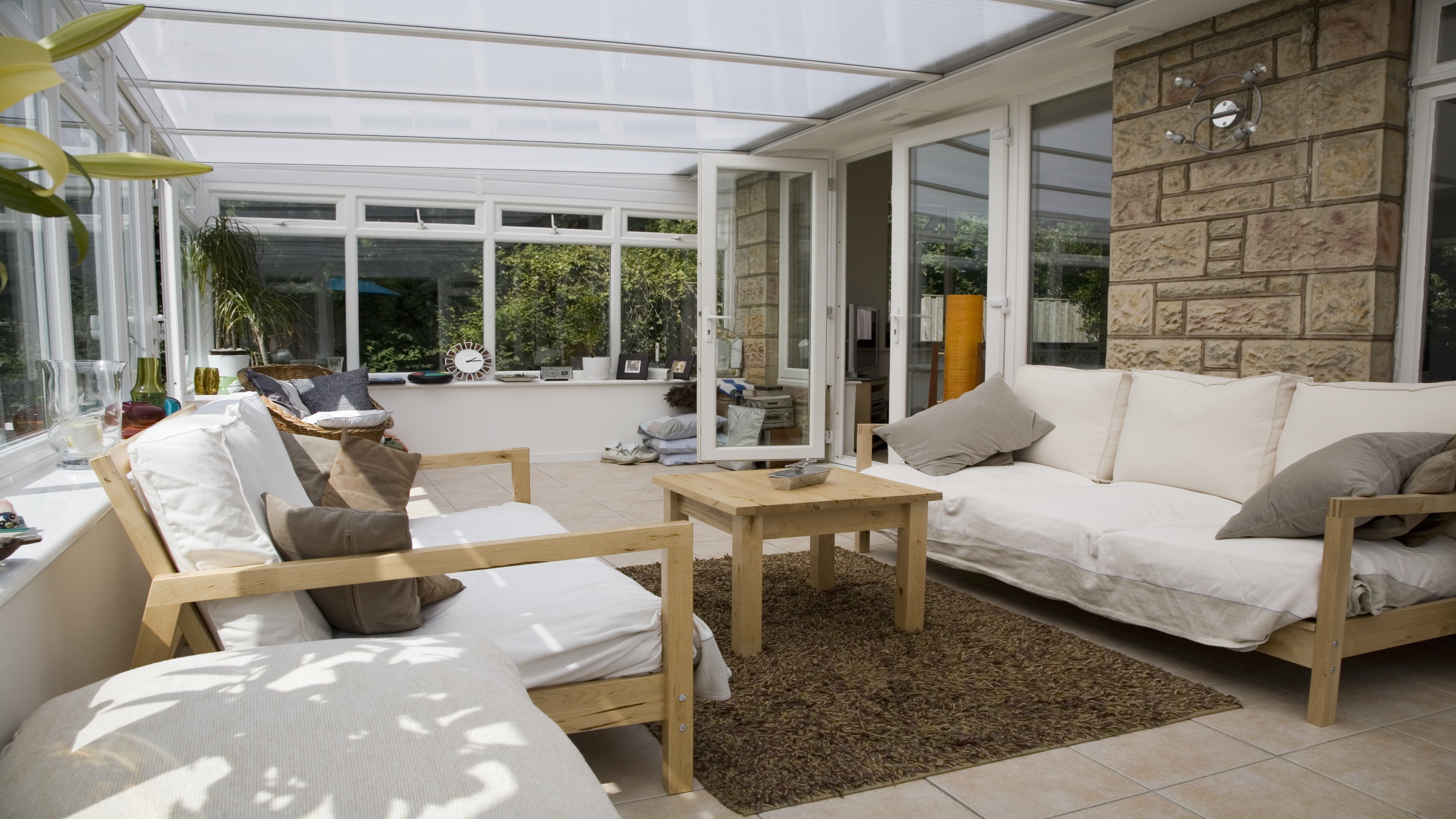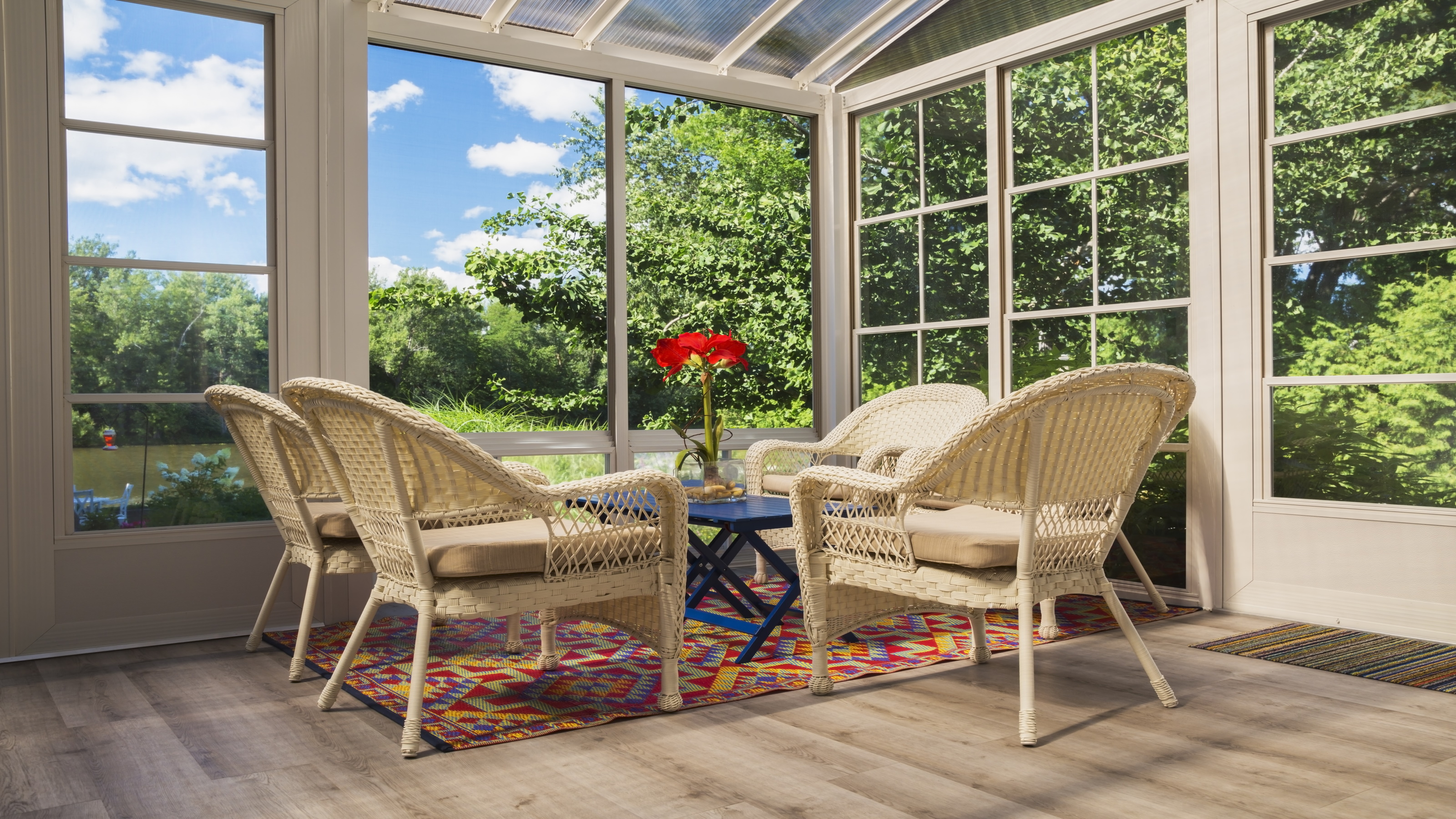Heating a Conservatory: The Options, Pros, Cons and Costs
Heating a conservatory can help ensure year-round comfort. We explore the best options for heating this space, plus the potential costs, rules and regs involved

Heating a conservatory is not as easy as you might think. Conservatories have an awful lot of glass, great for that outdoor-feel indoors, but a relatively poor insulator on the whole. So much glass, therefore, makes the conservatory difficult to heat.
A quality conservatory roof replacement should keep as much heat as possible inside. But what are the best ways to get heat into your conservatory in the first place?
We talk about how heating a conservatory actually works, from possible options, costs and benefits, to the planning consent and/or building regulations you may encounter during the actual process.
Why Does Heating a Conservatory Matter?
A conservatory requires relatively large investment from you as a homeowner. If the benefits of that investment are to be fully realised, then there will be times in the year when you need sufficient heating.
It all comes down to being comfortable while enjoying the views and the light, airy feel a conservatory provides.
An unheated conservatory will have a very low temperature in winter, and even if there is a thermal break between the conservatory and the house, it is likely to make the room adjacent to the conservatory uncomfortably cool.
This, in turn, negatively impacts the thermal efficiency of the house as a whole, with the heating system always trying to warm up that colder room.
Why heat a conservatory? Because an unheated conservatory is an unfinished room that will never live up to its full potential.
What Are the Options for Heating a Conservatory?
A conservatory will have the same heating options as any other room in your house, but its much poorer thermal efficiency and higher heat demand means that some are better than others for this particular type of room.
In order of preference they are:
1. Solar heat
The whole point of a conservatory is to allow sunlight in, which brings heat with it. Being mostly glass means that the room can be too hot in summer and too cold in winter. If we can learn to control the sunlight, though, then passive solar heat will keep the conservatory warm for six to eight months of the year.
Insulating a conservatory roof will be needed, along with thermal blinds or curtains for winter. Blinds, awnings or a pergola with deciduous planting can help to provide shade in summer.
Ideally there will also be some thermal mass – in the form of masonry wall or floor – to store heat throughout the day and release it again in the evening.
2. Air-to-Air Heat pump
Essentially an air conditioning unit that can be reversed to provide heat. Relatively low capital cost (£1,500 to £3,000 plus installation) and running cost is typically reasonable.
Do keep in mind that they run on electricity, and what will happen to the price of electricity in the near or distant future is anyone’s guess.
3. Wood burner
Perhaps surprisingly, one of the best places for a wood burner in the modern home would be the conservatory. A 5m x 4m conservatory will need around 3kW of heat in winter, well within the capability of most log burning stoves.
Extending your home central heating system means that the conservatory is heated at predetermined times, rather than only when it is occupied. A wood burner can do that kind of heat on demand, which, together with low capital and running costs, make it an attractive option.
Bear in mind that you will need to install a chimney or flue.
4. Underfloor heating (UFH)
Electric UFH is easy to install in new build or (to some extent) existing conservatories and relatively cheap (less than £1,000), but it can also be very expensive to run.
Wet UFH would be an extension of your home's central heating system. This is very difficult, and relatively expensive to install for existing conservatories. But running costs are comparatively low. And it's the one system most likely to provide controllable comfort.
5. Skirting radiators
These are essentially skirting-board-sized radiators that run round the room where the skirting boards should be.
Pros and cons are virtually the same as UFH, with the exception that this is a really good option for existing conservatories.
6. Trench radiators
Like skirting radiators, but placed in a trench around the perimeter of the room. Pros and cons as with UFH, except installation cost is relatively high, due to the trench, which also means it only really suits new build conservatories.
7. Plug-in electric radiators
Options such as oil-filled radiators and fan heaters can provide a quick burst of heat on cold days. Typically inexpensive to buy, the best conservatory heaters will deliver instant heat. However, bear in mind this option is perhaps better suited for using this room for short periods.

What is the Best Way to Heat a Conservatory?
With existing conservatories, first ensure that the insulation is there. Then, think about incorporating an air-to-air heat pump or perhaps even a wood burner into the space itself for extra warmth.
Skirting heaters would also be an option (if your existing boiler is up to the job), but these could be expensive. If you intend to go down this route, remember to allocate enough budget for product and installation fees.
What Is the Best Option for Heating a New Conservatory?
If your plan is to build a new conservatory from scratch, you may wish to think about sun room ideas first. That is, creating a room with lots of glazing but with a solid, insulated roof.
This will significantly reduce heat demand and improve comfort levels, and using the same heating system as in the house would be fine for this project.
How Much Will Heating a Conservatory Cost?
The cost of heating a conservatory will depend on various factors — namely, how big the conservatory is, how much glass it has, if there is a polycarbonate roof, and how old the conservatory is (thermal resistance of double glazing has improved considerably over the years).
A 5m x 4m conservatory with a plastic roof needs around 2,800kWh of heat each year. A good, modern gas boiler will therefore cost around £170 per year (irrespective of whether that is through UFH or radiators), a heat pump around £150 and logs around £140. Electric UFH will cost around £500 per year.

Is It Worth Heating a Conservatory?
This depends on whether you want to use your conservatory in winter.
There are some people who close up their conservatories in autumn, with doors, conservatory roof blinds and a thermal curtain between the house and this room, and don’t open them again until spring.
However, others would argue that the whole point of having a conservatory to begin with is using it whenever possible. Ergo, heating a conservatory will help make the space more accessible even when the weather turns cooler.
Heating a Conservatory: What are Planning Rules and Building Regulations?
Planning permission is not required for any work on a conservatory, as long as the conservatory itself is no more than 4m high, does not cover more than half the garden and its roof ridge is no higher than the eaves of the house.
Also, adding a heating system to that same type of conservatory does not need planning permission. However, it might need Building Regulations approval.
Essentially, the heating system in the conservatory needs to be controlled independently from the heating system in the house. The thinking behind this is that the conservatory is likely to be far less thermally efficient than the house, and a single control system will either overheat the house or insufficiently heat the conservatory.
If your conservatory has its own heater, that will have its own controls. If it is connected to the house heating (a radiator spurred off, say) then a programmable radiator valve will do the same job just fine.
In these days of rocketing energy prices, an uninsulated conservatory has to be considered a really bad idea.
If you're considering building a new conservatory think about building a sun room or orangery instead. If the conservatory is already there, the most sustainable option will be to insulate as best you can with thermal curtains or blinds and install a wood burner for added heat.
Get the Homebuilding & Renovating Newsletter
Bring your dream home to life with expert advice, how to guides and design inspiration. Sign up for our newsletter and get two free tickets to a Homebuilding & Renovating Show near you.
Tim is an expert in sustainable building methods and energy efficiency in residential homes and writes on the subject for magazines and national newspapers. He is the author of The Sustainable Building Bible, Simply Sustainable Homes and Anaerobic Digestion - Making Biogas - Making Energy: The Earthscan Expert Guide.
His interest in renewable energy and sustainability was first inspired by visits to the Royal Festival Hall heat pump and the Edmonton heat-from-waste projects. In 1979
this initial burst of enthusiasm lead to him trying (and failing) to build a biogas digester to convert pig manure into fuel, at a Kent oast-house, his first conversion project.
Moving in 2002 to a small-holding in South Wales, providing as it did access to a wider range of natural resources, fanned his enthusiasm for sustainability. He went on to install renewable technology at the property, including biomass boiler and wind turbine.
He formally ran energy efficiency consultancy WeatherWorks and was a speaker and expert at the Homebuilding & Renovating Shows across the country.

